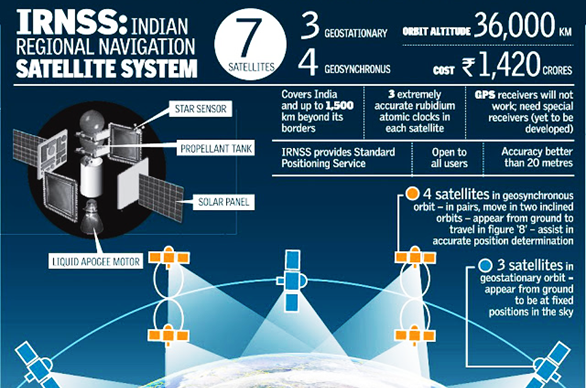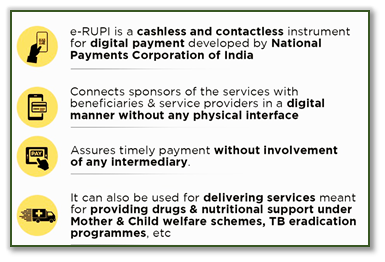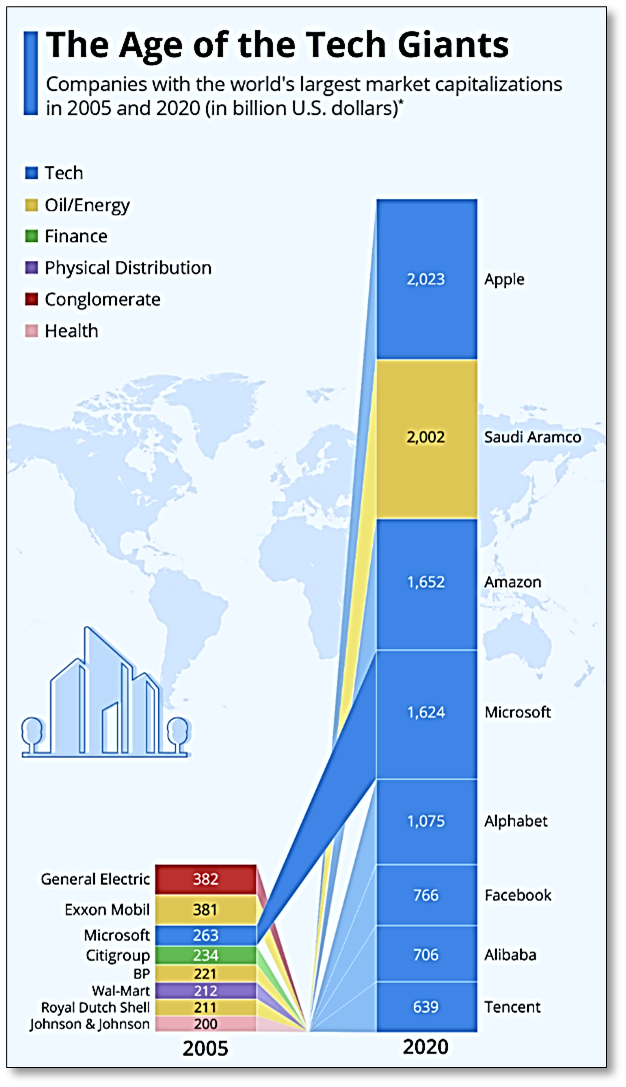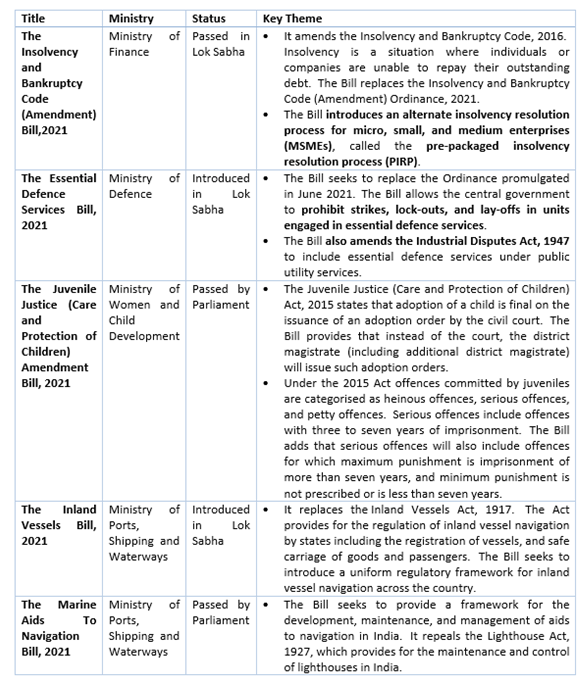Wednesday, 4th August 2021
The Factoring Regulation (Amendment) Bill
In News
Factoring law amendments have been cleared in both Houses of Parliament in the current session. The Bill has incorporated many suggestions from the U K Sinha Committee.
The amendments and their potential benefits
- Threshold removed for non-bank lenders: The current law on factoring business was enacted in 2011 which gave the Reserve Bank of India authority to allow non-bank finance companies to remain in factoring business only if it was their principal business. So, more than half of assets were to be deployed and income earned from factoring business.
- The Bill removes this threshold and opens up the opportunity in this business to more non-bank lenders.
- Enhance Liquidity for MSMEs: Currently a handful of NBFCs and banks were providing funding to MSMEs against their receivables. Factoring law amendments will enable nearly 9,000 NBFCs to participate in the factoring market instead of just seven now.
- It will provide relief to the MSME sector and help them in ensuring a smoother capital cycle and healthier cash flow.
- Lower Interest rates: NBFCs’ lending to MSMEs is typically against the balance sheet strength of these smaller companies, leading to interest rates that can be higher than 16 per cent. But in the case of funding against receivables (or factoring), the NBFC is taking a risk on the customer of the MSME who is larger corporate.
- It will lead to lower (nearly halving) interest costs.
- Intermediaries on CERSAI: It has enabled intermediaries to register a factoring transaction on the Central Registry of Securitisation Asset Reconstruction and Security Interest (CERSAI) portal instead of the existing practice of banks doing assignment in CERSAI one by one.
- This will reduce the lead time on operating on the portal from days to few minutes and hours.
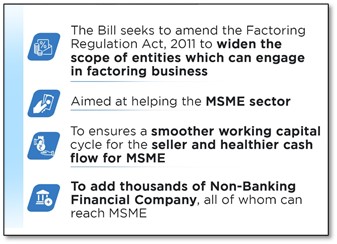
What does ‘Factoring’ mean?
- Factoring is a transaction where an entity (like MSME) sells its receivables (dues from a corporate) to a third party (a ‘factor’ like a bank or NBFC) for immediate funds. Banks and NBFCs provide finance against these receivables, enabling availability of ready funds for the MSMEs.
- This is done on an online TReDS platform initiated by the Reserve Bank of India (RBI). TReDS facilitates financing and discounting of MSME trade receivables through multiple financiers.
Sources:
Image source:
Preventive Detention Cannot Be Invoked Over Law and Order
In News
Supreme Court ruled that preventive detention laws cannot be invoked over a possible apprehension of breach of law and order and a person under the laws can only be detained where the public order has been directly affected.
Key Observations of the Supreme Court
The judgment came in an appeal filed by the wife of a man placed under preventive detention under the Telangana Prevention of Dangerous Activities Act shortly after he was granted bail in a cheating case. The Supreme Court made following observations-
- The State should not arbitrarily resort to “preventive detention” to deal with all and sundry “law and order” problems, which could be dealt with by the ordinary laws of the country.
- A Preventive Detention Order can only be passed if a person’s activities adversely affect or are likely to adversely affect the maintenance of public order.
- Preventive detention must fall within the four corners of Article 21 (protection of life and liberty, due process of law) read with Article 22 (safeguards against arbitrary arrest and detention) and the statute in question. To therefore argue that a liberal meaning must be given to the expression ‘public order’ in the context of a preventive detention statute is wholly inappropriate and incorrect.
- The bench observed that the expressions 'law and order', 'public order', and 'security of state' are different from one another.
- Mere contravention of law such as indulging in cheating or criminal breach of trust certainly affects ‘law and order’ but before it can be said to affect ‘public order’, it must affect the community or the public at large.
- The Court also discussed the conceptual nature of preventive detention law as follows:
- Preventive detention is, by nature, repugnant to democratic ideas and an anathema to the rule of law. No such law exists in the USA and in England (except during war time). Since, however, Article 22(3)(b) of the Constitution of India permits preventive detention, it cannot be held illegal, but we must confine the power of preventive detention within very narrow limits, otherwise we will be taking away the great right to liberty guaranteed by Article 21 of the Constitution of India.
- It follows, therefore, that if the ordinary law of the land (the Penal Code and other penal statutes) can deal with a situation, recourse to a preventive detention law will be illegal.
SOURCE:
- IN THE SUPREME COURT OF INDIA CRIMINAL APPELLATE JURISDICTION CRIMINAL APPEAL NO. 733 OF 2021
- Possible Apprehension Of Breach Of 'Law And Order ' Cannot Be A Ground For Preventive Detention: Supreme Court
- Preventive detention a necessary evil only to prevent public disorder: Supreme Court
- Can’t allow preventive detention on fears of detenu affecting public order: Supreme Court
- Can’t detain a person on breach of law apprehension: Supreme Court
- Supreme Court: Preventive Detention cannot be invoked over Fear, Breach of Law & Order
Gig economy to boost employment of Indian women in formal sector.
In News
Alternative work arrangements in the gig economy have the potential to absorb more women and increase their participation in the workforce with some amount of reskilling, according to a latest study.
What is Gig Economy?
Gig economy is a labour market characterised by the prevalence of short-term contracts or freelance work as opposed to permanent jobs. In a gig economy, temporary, flexible jobs are common-place and companies tend to hire independent contractors and freelancers instead of full-time employees.

About the News
- The Study: A study titled, “The Future of Work for Women in the Formal Sector in India”, was undertaken jointly by the United Nations Development Programme (UNDP) and the Federation of Indian Chambers of Commerce and Industry (FICCI) with support from the government of Japan.
- Post-Covid potential of Gig economy: The rise of the gig economy in the wake of Covid-19 has the potential to boost women’s employment in the formal sector, because of flexible, temporary, or freelance jobs, often on online platform. However, re-skilling will be crucial to expand opportunities for women in the formal sector.
- Changes bringing opportunities: The study underscores the fast-changing work environment, where technology will change the world of work, with the potential to expand opportunities for women working in the formal sector.
- Sectors that will see increased women employment: health and pharmaceuticals, electrical and electronics and Fast-Moving Consumer Goods (perishable goods) industry.
- Potential Issues: The study associates low level of technological skills with increasing levels of adverse impact, with the caveat that the time or pace of old jobs to be fully replaced by automation is uncertain, which may create unemployment for some time in India.
- Gender differences in jobs: The study also revealed that in high-skill and low-skill jobs, the impact of technology is gender neutral. It is the medium-skill jobs that have gender differentials because they require a blend of cognitive work and manual routine work, and gender can play a role here.
Sources:
- Gig economy to boost employment of Indian women in formal sector: Study:
- Gig economy to boost women’s employment in formal sector: Study
Image source:
This Day in History- Apsara
On August 4, 1956, Apsara, the first nuclear research reactor in India, reached criticality. It was also the first in Asia. The one-megawatt Apsara research reactor is a highly versatile swimming pool-type of reactor. It was utilised for various experiments including neutron activation analysis, radiation damage studies, forensic research, neutron radiography, and shielding experiments.

Sources:
Image of the Day- Puits de Sel
This image of Puits de Sel (salt wells) in Palmarin, a village on the Senegalese coast, has formed the pattern of a butterfly. The locals dig big holes in the ground to allow the sea water to infiltrate. The water evaporates and ripens in the sun and they recover the salt that collects on the edges of the wells.

Sources:
Image source:
India-Bangladesh Commercial Railway Link
- Context: Commercial services on the Haldibari-Chilahati railway link between India and Bangladesh, which had been defunct for over 50 years have resumed recently.
- The link is intended to improve freight and passenger transit into Bangladesh from Assam and West Bengal and vice versa and will aid the growth of trade and economic development in the region.
- This newly opened rail link will enhance rail network accessibility to the main ports, dry ports, and land borders in addition to aiding tourist from Bangladesh to visit places like Darjeeling, Sikkim, Dooars apart from countries like Nepal, Bhutan etc easily.
- The 75-km long track will also help better integrate the rest of the country with the Siliguri corridor, also known as the 'Chicken's Neck’ that connects India with the North-eastern states.
- The Haldibari-Chilahati rail link route was operational till 1965 after which the Indo-Pak war of 1965 effectively cut off all railway links between the two countries.

Source:
- India, Bangladesh resume freight train operation via Haldibari-Chilahati route
- Haldibari – Chilahati rail link jointly inaugurated by the Prime Ministers of India and Bangladesh during India-Bangladesh virtual bilateral summit
- India, Bangladesh to reopen 55-year-old Haldibari-Chilahati rail line
- India-Bangladesh launch new rail link to push cross-border trade
Image Source:
Floating Rate Funds
- Context: Floating rate funds have seen huge inflows in recent months as investors expect interest rates to rise.
- A floating rate fund is a fund that invests in financial instruments that pays a variable or floating interest rate.
- A floating rate fund, which can be a mutual fund or an exchange-traded fund (ETF), invests in bonds and debt instruments whose interest payments fluctuate with an underlying interest rate level.
- These funds can include corporate bonds as well as loans made by banks to companies.
- Although it aims to provide investors with a flexible interest income in a rising rate environment, the investors must weigh the risks of investing in the funds.

Source:
Image source:
GPS Clocks
- Context: The Indian Railways has decided to provide Global Positioning System (GPS) clocks for control offices.
- The GPS Clock is a satellite system that provides a very precise timing service.
- This is to enable section controllers coordinate with station masters, loco pilots and other staff directly involved in train operations to ensure uniformity in time to avoid accidents.
- The system uses atomic clocks (atomic clocks use certain resonance frequency of atoms usually cesium or rubidium to keep time with extreme accuracy) to provide everyone on Earth with low-cost access to international atomic time standards.
- GPS time transfer accuracy is within 40 nanoseconds of UTC.

Source:
Image source:
Madras Legislative Council.
- Context: the commemoration of the 100th year of the Madras Legislative Council (MLC) in Chennai recently.
- The Madras Legislative Council came into existence on January 12, 1921, with the Justice Party, forming the first government of the Madras Presidency under British rule.
- The Council met for the first time at Fort St George and continued to function as the legislative assembly of the then Madras State post 1947 and thereafter Tamil Nadu from 1969.
- It was setup under the Government of India Act 1919.
- The term of the Council was three years. It consisted of 132 members, of which 34 were nominated by the Governor and the rest were elected.
- The House has passed several landmark legislations like
- Voting rights for women in 1921.
- Hindu Religious Endowment Act 1926.
- Abolition of Devadasi System.
- Issuing free pattas to the poor for housing sites.

Source:
- Centenary celebrations of Madras Legislative Council to be kicked off on Aug 2
- Tamil Nadu's elected legislature to celebrate 100 years of chequered history
- President Ram Nath Kovind in Chennai today to commemorate 100 years of Madras Legislative Council
Image source:
Getting back in business in the Indo-Pacific
Essence: Editorial presents insights into US policy on Indo-Pacific region and a deliberate strategic re-focus, away from the 20 years of Afghanistan and Iraq and towards maritime Asia, where COVID-19, climate change and China are the compelling challenges.
U.S. has committed to working with allies and partners for the promotion of peace and prosperity in the region. It is possible that USA’s relationship with China is marked by three characteristics- adversarial, competitive, and cooperative.
Why you should read this article?
- To get insights into the US policy in Indo- Pacific & what it offers to regional stakeholders.
- To know about the messages conveyed by recent US diplomatic outreach/visits in Asian region.
- To understand the keywords which define US policy towards China & it’s importance for India.
Source:
Poverty in India is on the rise again
Essence: The article emphasizes on the point that consumer expenditure in India has fallen along with the rise in poverty in India post 2017-18. The major contributory factors have been demonetization, hasty implementation of GST causing impact on small MSMEs and the following slowdown. Covid pandemic has further accentuated the situation. The impact has been felt in both, urban and rural India.
Why you should read this article?
- To understand how poverty is estimated and its evolution in India
- To compare the poverty statistics of India’s dream run with the present times
Source:
What India needs for a just energy transition
Essence: The article starts by setting the context for energy transition. It explains that this energy transition must be inclusive and discusses the progress the world and India made in this transformation by quoting renewable power capacity and initiatives such as International Solar Alliance. Such transition will impact the job scenario in green and brown projects. The idea is to rationalize energy subsidies to promote clean fuels, a special transition fund to help people and areas affected by this transition, focusing on creating clean energy jobs in rural areas, integration of the energy efficiency methods into the construction sector and increasing the participation of women and youth in the green economy.
Why you should read this article?
- The article covers the General Studies paper 3 Infrastructure (energy) part of the syllabus.
- The article contains data regarding India's renewable energy generation
- Discussion of benefits of energy transition and various measures for sustainable and inclusive energy transition.
Source:
Rani Rampal: Indian women’s hockey team captain
Inspiring life journey
- She comes from a very humble family background.
- Her father worked as a cart-puller and mother as a house-help and it was difficult for the family to make a decent living.
- She and her family struggled to have basic services like electricity, three meals per day, safe and sanitary living.
- She developed an interest in hockey at an early age and she used to spend hours watching the game.
- It was not easy for her to start her journey. It involved fighting prejudices like girls are not allowed to play, convincing the coach to believe in her and invest in her, meeting the expense of the game and fighting malnourishment
- She started her practise with a broken stick. But once she started, there was no looking back for her.
- She became the youngest player in the national team to qualify for World Cup.
- She was not alone in her struggle: her family, her coach played a critical role in her journey.
Life lessons:
- Hard work works harder than luck
- Hard work is price we must pay for success
Source:
Share the article
Get Latest Updates on Offers, Event dates, and free Mentorship sessions.

Get in touch with our Expert Academic Counsellors 👋
FAQs
UPSC Daily Current Affairs focuses on learning current events on a daily basis. An aspirant needs to study regular and updated information about current events, news, and relevant topics that are important for UPSC aspirants. It covers national and international affairs, government policies, socio-economic issues, science and technology advancements, and more.
UPSC Daily Current Affairs provides aspirants with a concise and comprehensive overview of the latest happenings and developments across various fields. It helps aspirants stay updated with current affairs and provides them with valuable insights and analysis, which are essential for answering questions in the UPSC examinations. It enhances their knowledge, analytical skills, and ability to connect current affairs with the UPSC syllabus.
UPSC Daily Current Affairs covers a wide range of topics, including politics, economics, science and technology, environment, social issues, governance, international relations, and more. It offers news summaries, in-depth analyses, editorials, opinion pieces, and relevant study materials. It also provides practice questions and quizzes to help aspirants test their understanding of current affairs.
Edukemy's UPSC Daily Current Affairs can be accessed through:
- UPSC Daily Current Affairs can be accessed through Current Affairs tab at the top of the Main Page of Edukemy.
- Edukemy Mobile app: The Daily Current Affairs can also be access through Edukemy Mobile App.
- Social media: Follow Edukemy’s official social media accounts or pages that provide UPSC Daily Current Affairs updates, including Facebook, Twitter, or Telegram channels.


